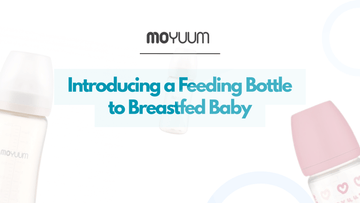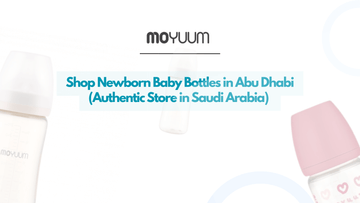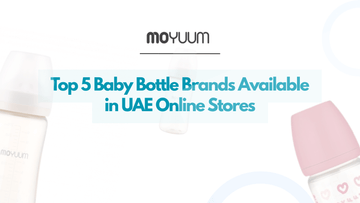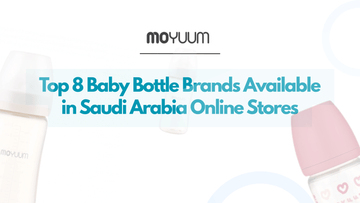“Will my baby forget how to breastfeed if I give her a bottle?”
It’s a question almost every mother asks—and you're not alone. Whether you’re heading back to work, managing low supply, or just need a break, introducing a bottle can feel like a huge decision.
In the early days, your newborn is learning to feed, bond, and thrive—so timing matters. Let’s break it down and help you make the best choice for both you and your little one.
You can introduce a bottle to your breastfed baby around 4 to 6 weeks, once breastfeeding is well established. This timing helps prevent nipple confusion while allowing flexibility for feeding.
Start with one bottle a day when your baby is calm and not overly hungry. Use a slow-flow nipple to mimic breastfeeding and ease the transition.
What’s the Best Time to Start Bottle Feeding?
Most experts agree the best time to introduce a bottle is between 4 to 6 weeks after birth—once breastfeeding is well established but before the baby becomes too accustomed to just the breast. This helps reduce the chances of nipple confusion while preventing bottle refusal later on.
In the first few weeks, your baby is still learning to latch and feed efficiently. Introducing a bottle too early—especially in the first two weeks—can interfere with milk supply and natural feeding patterns.
On the other hand, waiting too long (after 8–10 weeks) might make your baby reject the bottle completely. That’s why this 4–6 week window is considered the “golden period.”
Why Timing Plays a Critical Role in Feeding Success
Introducing a bottle at the wrong time can confuse your baby and affect your breastfeeding journey. Babies are born with a sucking reflex, but the technique needed for bottle and breast is different. Early introduction can cause a preference for faster bottle flow; too late, and the baby may reject it altogether.
In the UAE, where many working mothers return to their jobs shortly after maternity leave, bottle introduction becomes necessary. Planning it around your routine—ideally while breastfeeding is still your baby’s primary source—makes it easier for both of you to transition. And remember: every baby is different. Follow their cues, not just the calendar.
What Kind of Bottle Should I Choose?
Pick a bottle that closely mimics breastfeeding—with a soft, wide-shaped nipple and a slow flow. This helps your baby latch on naturally, and reduces the risk of overfeeding or gassiness.
While plastic bottles are common, many UAE moms are now shifting to glass bottles due to their durability, heat resistance, and chemical-free nature. Glass bottles don’t absorb odors and are easy to sterilize—making them a safe and sustainable choice. If you’re comparing options, MOYUUM Bottles are worth a look. Their silicone nipples are soft and natural-shaped, making them a favorite among moms transitioning from breast to bottle.
Signs That Your Baby Is Ready for Bottle Introduction
If your baby is feeding well, gaining weight steadily, and your milk supply has stabilized, they’re likely ready for bottle-feeding. Look for signs like consistent feeding schedules, strong sucking, and alertness during feeds.
You may also notice your baby starts showing curiosity when others are eating or drinking—that’s a great cue. Another sign is your ability to pump and store breastmilk without discomfort. Once you're comfortable expressing milk and storing it (ideally in glass bottles), you’re equipped to begin bottle feeding confidently.
When Should I Avoid Giving the Bottle?
Avoid introducing a bottle if breastfeeding is still challenging or your baby is under two weeks old. Early bottle use can cause latch issues or preference due to faster milk flow.
If your baby is still struggling with latch or you're experiencing pain, cracked nipples, or low supply, consult a lactation consultant first. Introducing a bottle before these issues are resolved can derail your breastfeeding progress. In cases where you’re advised to supplement, consider paced bottle feeding to maintain breastfeeding rhythm.
Tips for a Smooth Transition from Breast to Bottle
Start with 1–2 oz of pumped milk in a calm setting. Let someone else feed the baby while you're out of sight. Choose a time when your baby is not too hungry or too tired.
Use a slow-flow nipple, hold the bottle horizontally, and watch for signs of fullness. If baby turns their head or stops sucking, don’t force it. Repeat daily at the same time so it becomes part of a predictable routine.
UAE moms often find it helpful to prepare ahead, keeping essentials like pacifiers for kids and bottles in a clean, organized diaper bag for outings.
What If My Baby Refuses the Bottle?
Bottle refusal is common, especially if the baby hasn’t been introduced early enough. Stay patient, calm, and try different strategies.
Switch caregivers, change feeding positions, warm the nipple slightly, or try different bottle shapes. Some moms even use teether-style bottles to help babies associate the nipple with comfort. Babies love familiarity, so sometimes wearing a piece of mom’s clothing while feeding can help. Persistence, without pressure, usually pays off within a few days or weeks.
Frequently Asked Questions
Can I combine breastfeeding and bottle feeding?
Yes. This is known as mixed feeding. Use slow-flow bottles and continue offering breast to maintain supply.
What should I put in the bottle—formula or breastmilk?
Start with expressed breastmilk to avoid multiple changes at once. Once baby is comfortable, you can explore other options if needed.
How often should I offer the bottle?
Try offering it once daily at the same time. Routine helps babies adapt more easily.
Final Thoughts
There’s no one-size-fits-all answer to when to introduce a bottle. The key is to balance your needs as a mom with your baby’s readiness. For many moms in the UAE juggling work, family, and recovery, bottle feeding isn’t just practical—it’s empowering.
Whether you choose a silicone or glass bottle, a gentle teether, or a soothing pacifier, remember: your baby thrives when you feel confident and supported.





